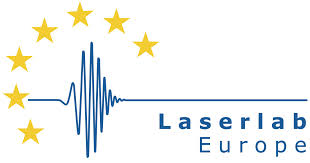1980‘s
In the beginning of 1980’s, utilization of plasma for coatings and thin layers preparation gained momentum also at the Institute of Plasma Physics in Prague. After certain challenges linked with administration, the focus was eventually pointed to plasma spraying using unique, in-house developed water stabilized plasma (WSP) torch whose principle and construction philosophy were different to those of conventional gas stabilized torches. Various issues including thermal plasma generation, i.e. construction of plasma torch, and development of powder feedstock materials were also addressed. However, the lack of materials scientists was a severe hindrance and, hence, the Academy presidium decided that Prague subsidiary of Institute of Physical Metallurgy (headquartered in Brno) will be moved to IPP effective 1st January 1985. This transition included not only personnel (Pavel Chráska, Jiří Dubský et al), but also experimental equipment and lead to formation of Materials Structure Department whose main tasks were connected with feedstock powder development and coatings’ evaluation.
Newly created department was soon equipped with high-end X-ray powder diffractometer and scanning electron microscope with electron probe analyser. More importantly, several outstanding scientists such as František Kroupa, Karel Voleník or young researchers like Jan Ilavský joined the department. However, the topic of plasma spraying still remained distributed among several departments and research groups.
1990‘s
Situation changed significantly after the Velvet revolution in 1989. Materials research was concentrated into one department, Materials Engineering Department, where both the materials research and plasma spraying (with Karel Neufuss as the head of the spraying facility) were carried out cooperatively. Detailed characterization of feedstock powders, intermediary products and coatings became standard and the complex attitude led to significant development in understanding of processes involved during plasma interactions with deposited materials. Methodology of fabricating free-standing parts was developed and implemented in cooperation with numerous partners from both industry and academia. Thanks to open borders, the researchers could finally take part on international conferences and start international cooperation (USA, Finland, France, etc.). In the very year of 1990, intensive cooperation with leading thermal spraying group of prof. Herbert Herman at Stony Brook University (SBU) in USA was started and lasts to nowadays. IPP donated to SBU one WSP system which has greatly contributed to its awareness among international thermal spray community and subsequent WSP installations in USA, Belgium and Japan.
Through the emphasis on complex study of plasma spray coatings, i.e. phase evolution, oxidation, thermal stability, etc. the Materials Engineering Department has positioned itself among laboratories covering key aspects of thermal spraying and attained international respect via publishing of several priority results.
Since 2000
The new millenium marked gradual change by modernization of experimental facilities. A new generation of researchers also joined the team. The research topics were appended with research of materials for fusion both within the institute (with Tokamak Department) and within the frame of EU/EURATOM projects. In the beginning, plasma spraying was used for deposition of plasma facing materials, such as those with low Z and tungsten coatings and FGMs. Later, spark plasma sintering (SPS) was employed as well. Together with development and complex characterization of fusion materials, the investigation of materials interaction with plasma and hydrogen isotopes relevant for thermonuclear fusion have been started.
In cooperation with ProjectSoft HK, the WSP system was substantially upgraded, in particular the current supply, regulation and control environment. Together with Thermal Plasma Department and ProjectSoft HK company, we are involved in development and commercialization of novel hybrid WSP technology.
In 2012, newly built "Laboratory of Plasma Technologies - LPT“ was opened in Prague-Letňany and in the same year, Spark Plasma Sintering technology (located also in LPT) was installed as the first system in the Czech Republic.
Future prospects
There are three key research areas for the coming years (i) employment of water stabilized plasma torch for thermal spraying, (ii) preparation of materials by SPS, (iii) materials for fusion applications. We would also like to extend our focus to other plasma technologies.
Last but not least, education of the new generation of engineers and researchers in the field of thermal spraying and fusion materials remains one of our top priorities.









